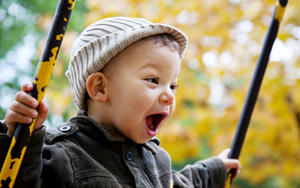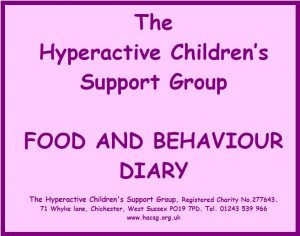
It would be easy to label every healthy, lively child as hyperactive. So how do you tell the difference?
The following signs have been reported for many Hyperactive/ADHD children. However, as all children are different, the signs and symptoms may vary:
In infancy
- May be unsettled, restless, crying and difficult to settle.
- Colic and sickness linked to feeds may be an issue and feeding may be problematic.
- May be excessively thirsty (a sign of Essential Fatty Acid Omega Oils deficiency).
- Dribbling is not uncommon.
- Night terrors, cot rocking, head banging are reported.
- Some young children are reported to sleep well and are generally content but problems often begin once the child becomes more mobile and when the diet is varied.
In older children
- Clumsy and accident prone.
- Erratic and disruptive behaviour (fits and tantrums).
- Compulsive touching of everything and everyone. Constant motion (i.e. wriggles legs). May walk on toes, and often runs everywhere.
- Disturbs other children and may be aggressive and argumentative.
- Unable to concentrate, never finishes anything he/she begins. Demands must be met immediately. Frustration leads to temper tantrums. Easily distracted and often unable to follow instructions. Lack of social skills. Hard to discipline.
- Normal or high IQ but may do badly at school. “Jekyll and Hyde” moodiness. There may also be some specific learning difficulties. Can get easily upset.
- Poor hand and eye coordination. Uncooperative, defiant and disobedient. Restless.
- Talkative. Fearless. Risk Taker.
Parents report some physical health problems such as asthma, eczema, aches and pains, hayfever, headaches, bedwetting, poor appetite, flushed or pale complexion, excessive perspiration, red ears. “Silliness” in general.
Not every child will have all of the symptoms above, and of course there are degrees of the problem. As they reach puberty hyperactive children may experience a spontaneous change in their behaviour patterns, with a lessening of hyperactivity and aggression.
However, it is common for underlying problems to remain and it is essential that attention to diet is maintained and other forms of help sought.
Hyperactive Children – Fresh Air, Green Spaces and Exercise can help
Just getting out of the home and having a ‘breather’ in some green or other open space gives children a chance to ‘let off steam’ and help use up some excess energy.
Fly a Kite, Play Hide & Seek, Hopscotch, Roller Skating etc
One of our Readers suggested “The Pebble Game”…
The Pebble Game: A Beach game for more than two children…Everyone has a turn. One person starts as “the judge’ the others have to find a pebble that they think might be the ‘best’. All the pebbles are put it in a bucket being held by the ‘judge’- without them seeing who put what in. Once everyone has found their favourite pebble, whichever one is chosen by the ‘judge’, the finder gets to be the next judge.
Instead of a pebble, children could find a shell, or if in a park, something like different leaves.
Leave the car at home, walk to your nearest park, take your own mini picnic, hopefully there are some swings and other play equipment that are accessible.

 The HACSG Food & Behaviour Diary is now available online.
The HACSG Food & Behaviour Diary is now available online. 